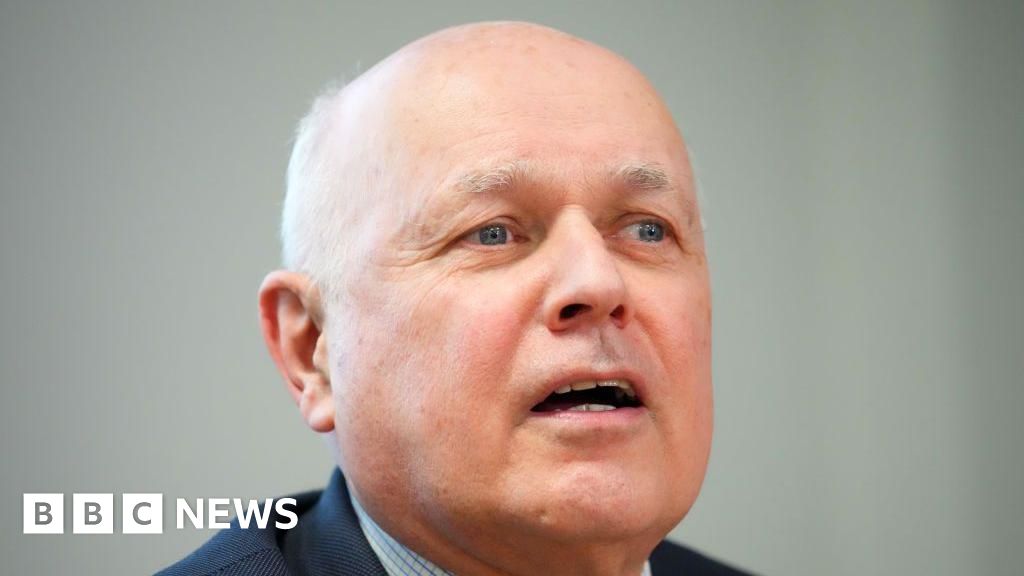 Getty Images
Getty ImagesFormer Conservative leader Sir Iain Duncan Smith says the alleged Chinese spy who has been barred from entering the UK could be one of many operating “in plain view”.
Sir Iain – who is applying for an urgent question in the Commons on China’s influence – told BBC Radio 4’s Today programme the alleged spy could be “the tip of the iceberg” of those in the UK doing the same job.
The businessman, known only as H6 due to a court order protecting his identity, was banned from the UK last week by the UK’s semi-secret national security court. The court heard he had formed an “unusual degree of trust” with the Duke of York.
Former security minister Tom Tugendhat said it showed the “the level of threat” posed by China to the UK.
Other politicians have also shown concern over the reach of the United Front Work Department, an arm of the Chinese Communist Party (CCP) which H6 is believed to have been associated with. The department is tasked with conducting influence operations.
“They’re trying to change the policies of the UK and other countries around the world,” Tugendhat said.
“They’re trying to influence individuals not just in the royal family but in academia, in politics, in business and even sometimes in journalism.”
Talking to BBC Breakfast, he said it was a way for the CCP to “exert influence” within the UK.
Last week, Prince Andrew said in a statement that he had “ceased all contact” with the Chinese businessman, with all meetings having been “through official channels” and “nothing of a sensitive nature ever discussed”.
H6 was invited to the prince’s birthday party in 2020 and was told he could act on his behalf when dealing with potential investors in China.
In a letter found on one of H6’s confiscated devices, the Chinese businessman was told by one of Prince Andrew’s advisors: “Under your guidance, we found a way to get the relevant people unnoticed in and out of the house in Windsor.”
It is not clear how H6 became close to Prince Andrew.
The alleged targeting by an alleged Chinese influence operation was the latest controversy for Prince Andrew, who is no longer a working royal.
It followed scrutiny of Prince Andrew’s finances this autumn, when King Charles withdrew his financial support for Prince Andrew and the costs of running Royal Lodge in Windsor, with a security bill costing several million pounds per year.
 Getty Images
Getty ImagesFollowing this latest controversy there have been reports that Prince Andrew is being encouraged to keep a low profile over the Christmas season.
He would usually be part of the Royal Family’s Christmas Day appearance at church in Sandringham and at another Christmas Royal gathering this week and there have been suggestions he will be advised to keep out of public sight and not attract any more attention.
The concerns are that Prince Andrew would become the talking point and overshadow such events, so he might be urged to voluntarily reduce his public visibility over Christmas.
Prince Andrew still attends family events and ceremonial occasions, but not always the public moments. For instance, he has attended the annual Order of the Garter ceremony, without taking part in the public procession.
Buckingham Palace did not comment, as Prince Andrew is no longer a working royal.
The BBC has contacted Prince Andrew for a response.
Spying happening in ‘plain view’
Alleged spy H6 was stopped and questioned by UK border police officers in November 2021, when he also surrendered a number of electronic devices including a mobile phone.
In March 2023, H6 was banned entry into the UK by the then-Home Secretary Suella Braverman.
He then brought his case to the Special Immigration Appeals Commission, a court set up to consider appeals against decisions to ban or remove someone from the country on national security or related grounds. In the published ruling, external, the judges upheld Braverman’s decision.
H6 has met with many senior figures in the UK, including former Prime Ministers David Cameron and Theresa May, and Prince Andrew, to whom he was described as a “close confidant”.
But Sir Iain said the bigger issue of H6 and Prince Andrew is how China’s well-funded attempts to make contact with influential individuals has been happening in “plain view”.
“The reality is that there are many many more involved in exactly this kind of espionage that’s taking place.”
H6 is not allowed to be named under an anonymity order imposed by the courts last week, which Sir Iain called ridiculous.
It is believed that some MPs may use parliamentary privilege to name the Chinese businessman. Parliamentary privilege gives MPs and peers unrestricted free speech within the chambers, and allows them to name people without the fear of being taken to court.
But others, including Jim McMahon, the minister of housing, communities and local government, believe the naming of H6 is a “matter for the courts”.


























+ There are no comments
Add yours